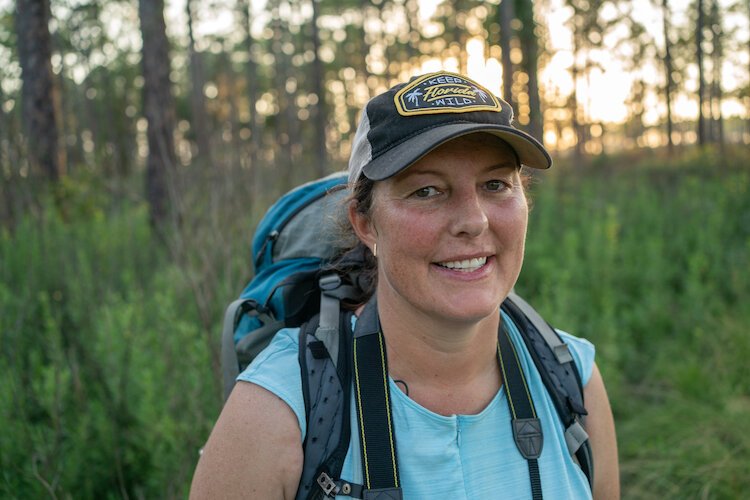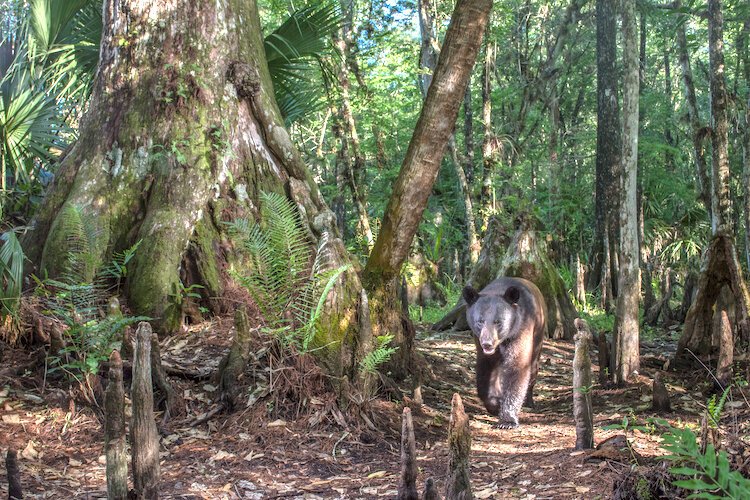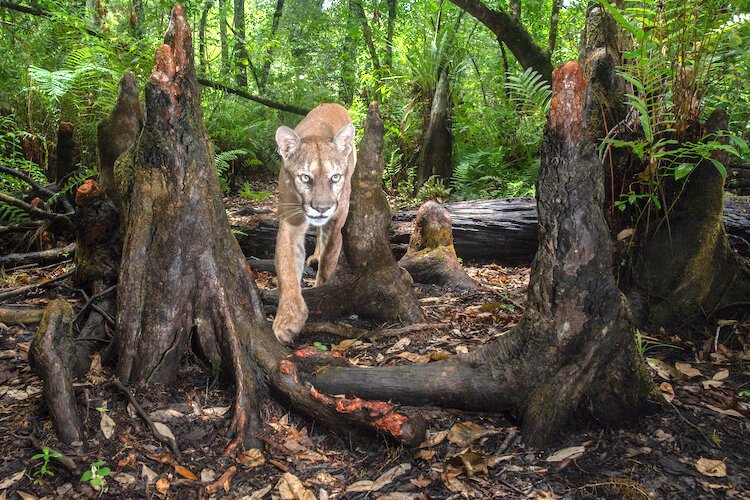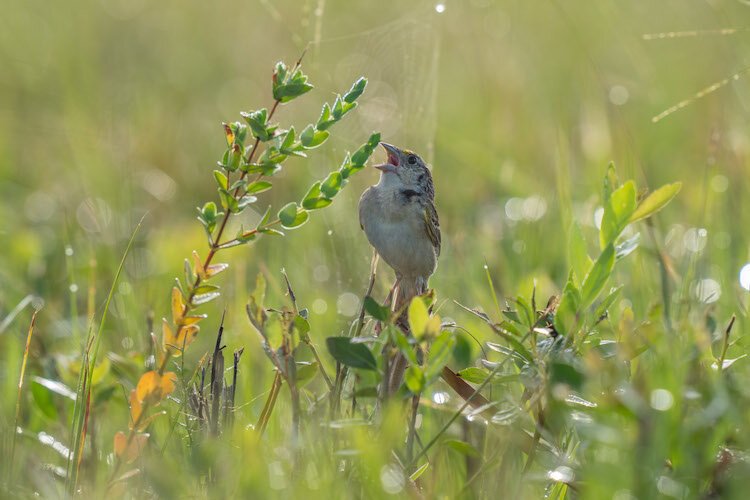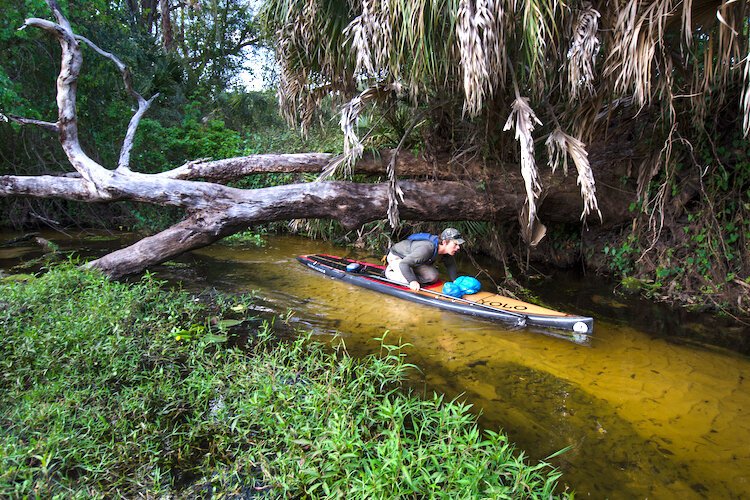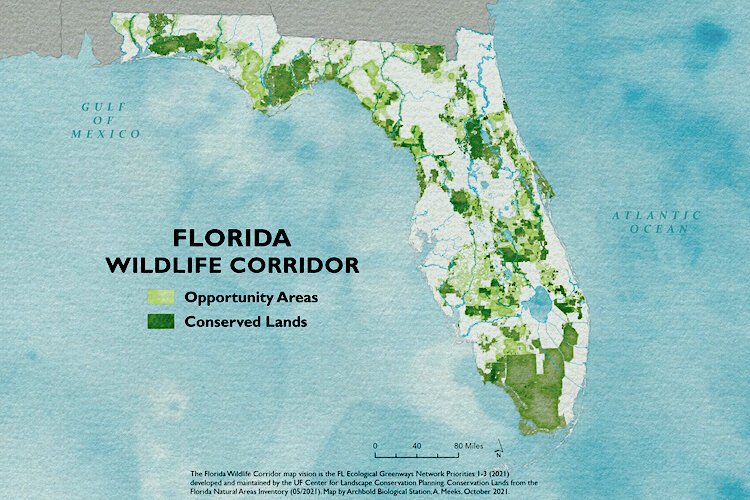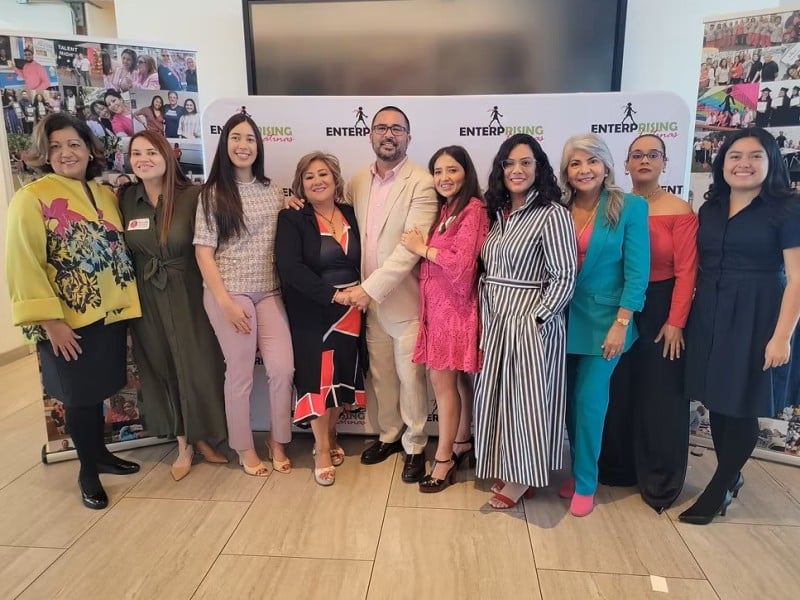Florida Wildlife Corridor gains traction, eyes future conservation
Tampa-based nature photographer Carlton Ward, Jr., who has been photographing natural beauty and wildlife in his native Florida for decades, came up with the idea for the Florida Wildlife Corridor Coalition.
A wandering black bear named M34, and a wandering young photographer who didn’t want to follow in his lawyer father’s footsteps, were both part of the origin of the Florida Wildlife Corridor.
Right now, the Corridor is part reality and part still an idea.
On a map, it looks like a patchwork of green blotches that show the constantly diminishing areas in Florida where remnants of the state’s once-astonishing abundance of wildlife can survive.
Eventually — depending partly on the Florida Legislature’s tenuous commitment to environmental preservation — it may provide a statewide network of natural pathways for bears like M34, panthers and scores of other animals to wander, find food and mates, and maybe survive the human onslaught of Florida’s population growth.
About 10 million acres of land in Florida are currently protected from development, mostly owned by the public but including ranches and farms whose owners have sold conservation easements to prevent development.
But many of those protected areas are becoming isolated patches, and for a wildlife population, isolation leads inevitably to decline.
The goal of the Corridor is to connect those patches, providing pathways for dispersal and roaming. It would require protection of at least part of another 8 million acres identified by ecologists as “opportunity areas” — and possibly billions of dollars.
Much of that money would have to come from a state government that often appears to value low taxes, big development, and population growth far more than the natural environment.
Tampa-based nature photographer Carlton Ward, Jr., who has been photographing natural beauty and wildlife in his native Florida for decades, came up with the idea to create a name and an organization to push creation of the Corridor, the Florida Wildlife Corridor Coalition.
It’s headed by Mallory Lykes Dimmitt of St. Petersburg, one of the Coalition’s co-founders, who is part of the Lykes shipping, citrus, and ranching family and formerly worked with the family company.
Tom Hoctor, a wildlife ecologist at the University of Florida, is the chief designer of the Corridor, planning which areas are most crucial to preserve and link various wildlife habitats.
Deep roots in Florida
Ward, 45, comes from a line of distinguished Tampa Bay area lawyers.
His great-grandfather, Doyle E. Carlton, was a founder of the Carlton Fields law firm and Florida’s 25th governor; an uncle, David E. Ward Jr., was a founder of the Hill Ward Henderson firm; his father is prominent Clearwater attorney R. Carlton Ward.
“I guess I was sort of genetically programmed to be a lawyer,” he says.
But for generations, the family has also owned a 2,000-acre ranch in Hardee County where young Ward learned to hunt, ride horseback and develop a love the woods in the places his father as a boy worked summers as a cowboy on open ranges. Meanwhile, most of his life was in Pinellas County, one of the most densely developed counties in the Southeast.
“I grew up where the only patches of green left were barrier islands,” he says. “That’s where a lot of the sense of urgency I feel about conservation came from.”
At Wake Forest University in North Carolina, planning to become an engineer or a lawyer, he signed up for biology and anthropology courses as academic requirements and felt drawn. “At that point, I started becoming passionate about conservation.”
When he picked up a camera for a study-abroad stint in Australia, his die was cast.
He spent the rest of his college years shooting sports photos for the school newspaper and yearbook, then several years doing photography internships and full-time work for Smithsonian Institution. It sent him on half a dozen expeditions to Gabon in Central Africa, which led to his first book.
He also got a master’s degree from the University of Florida that somehow managed to combine photojournalism and conservation.
Today, he lives in Tampa with his wife Suzie Ward — a lawyer, of course — and their three young children.
In 2006, Ward met Hoctor, who was already mapping and thinking about how to connect wildlife refuges, and Joe Guthrie, a wildlife biologist then tracking bears on cattle ranches in south central Florida.
In 2009, Ward suggested formally naming the Florida Wildlife Corridor initiative to grow support for their efforts. Around that time, Guthrie had placed a GPS collar on a young male bear designated M34.
A Central Florida bear “is … constantly moving in search of the most easily available food,” notes the Corridor Coalition’s website — saw palmetto berries in pine flatwoods, wild grapes, and blackberries in scrub land, then acorns in live oak hammocks in fall.
Young males instinctively wander and, in breeding season, search for mates, always trying to avoid human contact.
At the start of breeding season in 2010, recently collared M34 started on an 8-week, 500-mile migration heading north from his home range near Sebring. He found wilderness areas to move through during the day and crossed roads including heavily traveled State Road 60 under cover of darkness.
But then he appeared to hit an impassable obstacle — Interstate 4.
For eight days he repeatedly approached the highway and backed off, at one point even spending a day in a small patch of woods next to Celebration Hospital. He then gave up, headed back to the southeast, and eventually connected with a bear population — including lady bears — near his original home range.
To the scientists, that journey demonstrated the isolation of the bear population in Highlands and Glades counties.
It’s not unusual, says Hoctor, for bears and panthers to be halted in their wanderings by I-4, or be killed trying to cross.
Ward says M34 “sort of illustrated the reasons for what we were trying to do,” and thus became the unofficial Corridor mascot.
Building on success
The roughly 10 million acres of land already preserved in Florida is a substantial percentage of the state’s 42 million-acre area (36 million excluding inland waters), much more than most states.
But 4 million acres of that is in the Everglades alone — an area twice the size of Yellowstone National Park — and without the Corridor, “Those 4 million acres will get cut off from the rest of the state and the rest of the country,” Ward says.
In 2015, Ward founded the Path of the Panther project, with support from the National Geographic Society, to help inspire the need for conserving the Florida Wildlife Corridor. Five years of photography, including a network of remote camera traps, let to an April 2021 feature story in National Geographic Magazine, titled, “How America’s most endangered cat can help save Florida.”
Copies of the article, which included a two-page map of the Florida Wildlife Corridor, were shared with Florida lawmakers during the 2021 Legislative session, along with a National Geographic short film, “Saving the Florida Wildlife Corridor.” (which can be seen on the NatGeo YouTube channel or via FloridaWildlifeCorridor.com)
The Corridor coalition this year scored two triumphs.
First, the Legislature passed the Florida Wildlife Corridor Act establishing the corridor as a conservation initiative of the state, joining a small group of states that have passed wildlife corridor legislation in the past two years.
The legislation did not include specified funding, but the state also provided $300 million in federal stimulus money for Corridor land preservation and another $100 million of state money for the Florida Forever land preservation program, most of whose projects overlap with the Corridor.
The Corridor Coalition, with a donation-funded budget of roughly $1 million a year and growing, is dedicated to “a coordinating role among a lot of conservation organizations, state agencies, and others,” says Dimmitt. “What we do is showcase the need — produce storytelling and content, tell the story.”
Among other things, the group sponsors expeditions through parts of wild Florida, creating films about the trips for publicity.
Most of the remaining 8 million acres of “opportunity areas” for the Corridor are working land — ranches and farms — she says. Preserving them will require persuading owners to sell development rights, while they continue to own and use the land.
That includes numerous small “bottleneck” tracts in rapidly developing areas that serve as connectors to larger, preserved areas but are in immediate danger of being developed, she says. That land tends to be expensive.
Hoctor says the Corridor’s goals could be substantially fulfilled without preserving all 8 million acres of opportunity areas, and he and other conservation scientists are working to identify the most crucial needs.
But he says he believes it will take at least $10 billion to preserve enough additional land.
That would require at least as much money every year for the coming two decades or more as the state provided this year — a goal that could seem unreachable given the recent history of Florida Forever funding. It was eliminated completely for three of former Gov. Rick Scott’s eight years in office and never rose above $100 million, despite the passage of a constitutional amendment expected to provide around $300 million a year.
Prominent environmental writer Craig Pittman compared this year’s actions by the Legislature and Gov. Ron DeSantis to “the Devil showing up in church on Easter Sunday, apologizing to everyone for causing so much trouble, and dropping a $1,000 bill in the offering plate.”
But Ward is optimistic.
He believes the plan to build three huge new toll roads through some of Florida’s most environmentally crucial land got people thinking — it was repealed last year, with much of the opposition arising from environmental concerns.
“I think people are starting to get it,” he says. “I think they’re seeing that Florida does not have infinite land anymore and that green infrastructure has to be considered.
“You have really conservative ranchers realizing they’re in the same boat with the Florida panther. I think the tide is changing for land conservation.”
You can also read more details about the Florida Wildlife Corridor Act in this National Geographic article.


